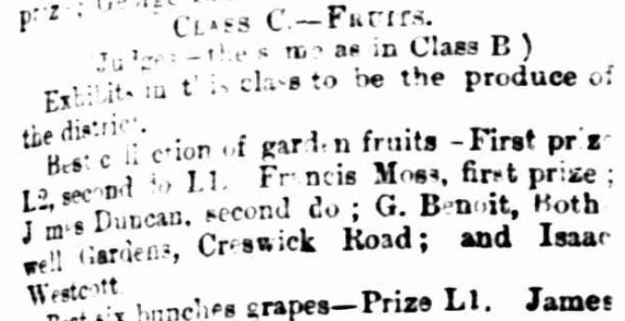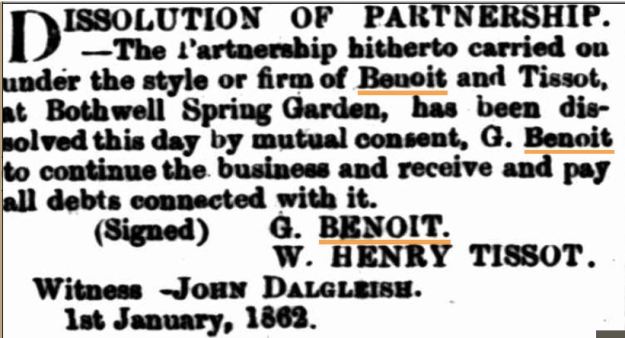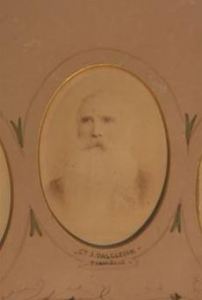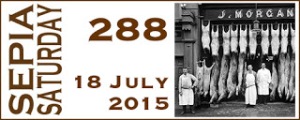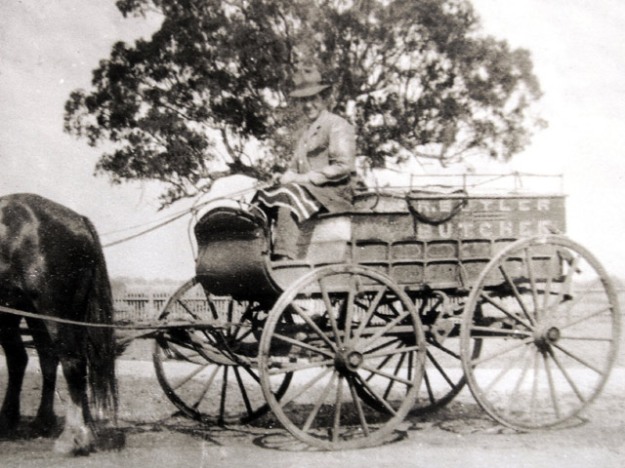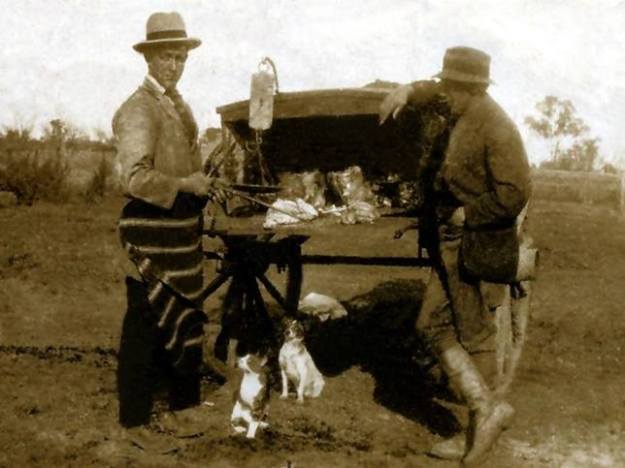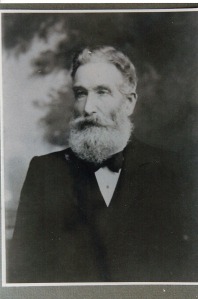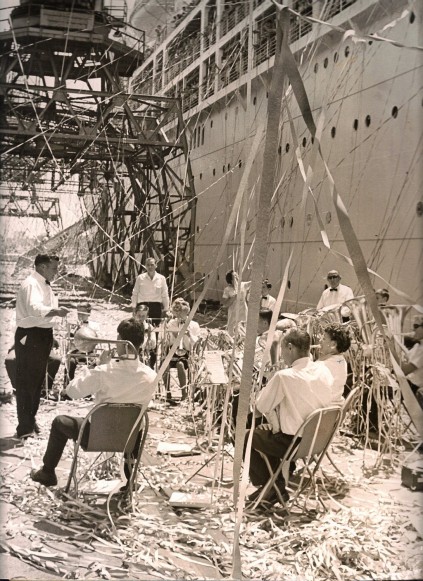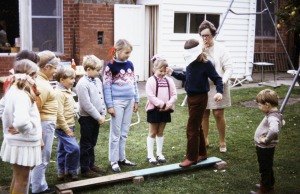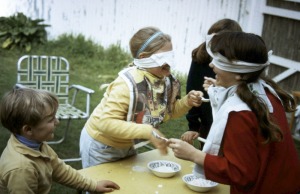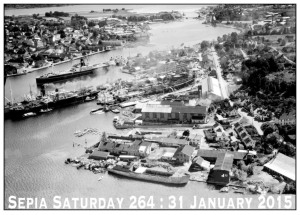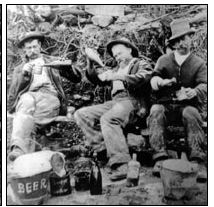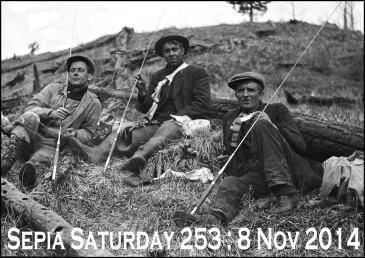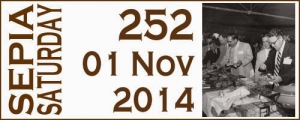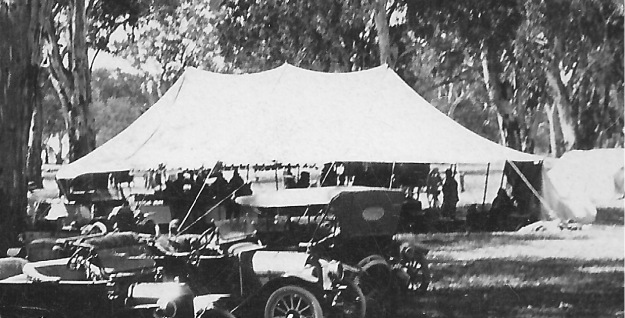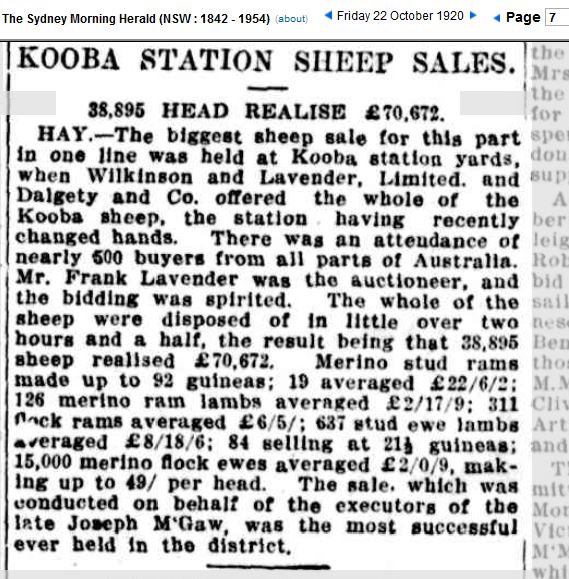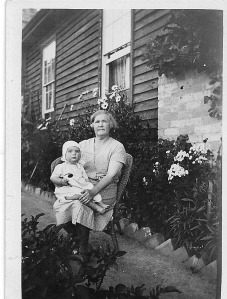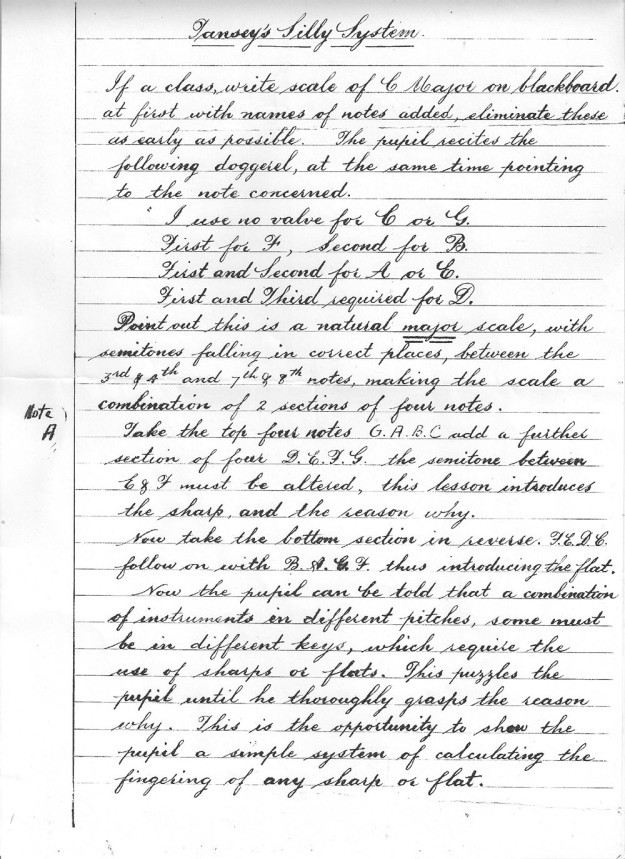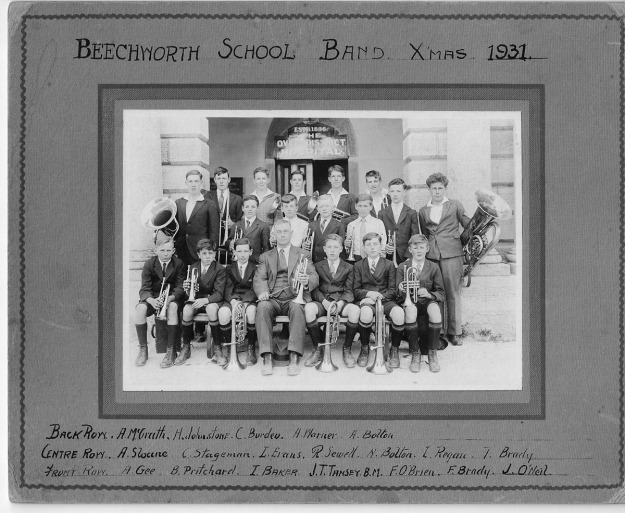The Aston family of Carisbrook in Central Victoria has been well documented by its descendants and others, particularly as their blind daughter Tilly was so well known. But this week I chose this photo to represent Sepia Saturday’s Theme of “Signs” as we can see Edward Aston’s sign of Bootmaker on his place of business (and home) in the 1870s.
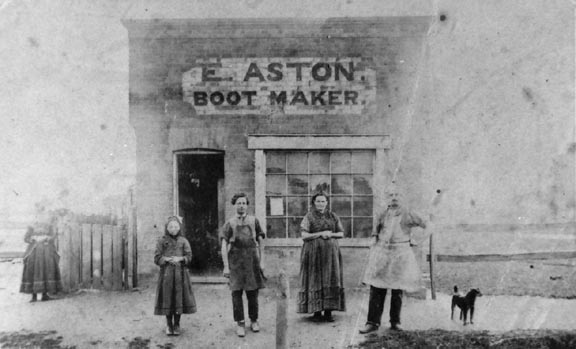 Standing in front of the shop in Simpson St, Carisbrook, are Sophie (b1862) and William (b1860) with their parents Ann and Edward Aston, some time in the 1870s. Ann and Edward had eight children, the youngest being Matilda, born in 1873. When Tilly (Matilda) was seven she became blind but was an inspiration as she overcame her difficulties and became well known as an author and teacher , and establishing organizations which were later to become the Victorian Braille Library and Vision Australia. An Electorate in Melbourne for the Federal Parliament is named Aston in honour of Tilly.
Standing in front of the shop in Simpson St, Carisbrook, are Sophie (b1862) and William (b1860) with their parents Ann and Edward Aston, some time in the 1870s. Ann and Edward had eight children, the youngest being Matilda, born in 1873. When Tilly (Matilda) was seven she became blind but was an inspiration as she overcame her difficulties and became well known as an author and teacher , and establishing organizations which were later to become the Victorian Braille Library and Vision Australia. An Electorate in Melbourne for the Federal Parliament is named Aston in honour of Tilly.
At the side we have an early example of a photobomber – I don’t know who she is !
I am interested in this family as when my great-grandmother Eliza Bosley arrived from Coleford in Gloucestershire she stated when she landed in Melbourne that she was travelling to her Uncle Edward Aston in Carisbrook.
In fact Edward was not Eliza’s uncle but her cousin – their mothers were sisters.
Back in Gloucestershire there had been four Baynham sisters. Any of the following names which are underlined are people known to have lived in Carisbrook.
Amelia Baynham b 1808 became Edward Aston’s mother
Ann Baynham b 1815 became Eliza Bosley’s mother (my great grandmother)
Charlotte Baynham b 1812 married Samuel Attwood and Charlotte herself came to Carisbrook, the only one of the sisters to do so, She was Charlotte Amelia Attwood’s mother and Charlotte Amelia married Frederick Eager who, prior to their marriage had been a partner with W.R.Smith in the shop from the photo lower down.
Frances, Baynham b 1819 married William Thomas.
There is always a mystery, an unresolved issue with my ancestors. In this case Tilly Aston had said in her Memoirs that her father, Edward Aston, had come to Carisbrook in 1857 because he already had an uncle in Carisbrook. Originally Edward and Ann had spent 2 years in South Australia before coming to Carisbrook, so who was the uncle ?
I think it most likely that it was someone on his Father’s side of the family, either Samuel Attwood or William Thomas. In the 1856 Electoral Roll for Carisbrook where is a William Thomas living at nearby Alma, who is on the Roll as he is the possessor of a Miner’s Right. And there is plenty of evidence of a Samuel Attwood with a nursery at Carisbrook. As yet I have found nothing similar on his mother’s side of the family.
Or was Edward just using the term Uncle in a creative way as Eliza did when arriving in Australia.
As with all family history research there is always room for the next person to continue the research.
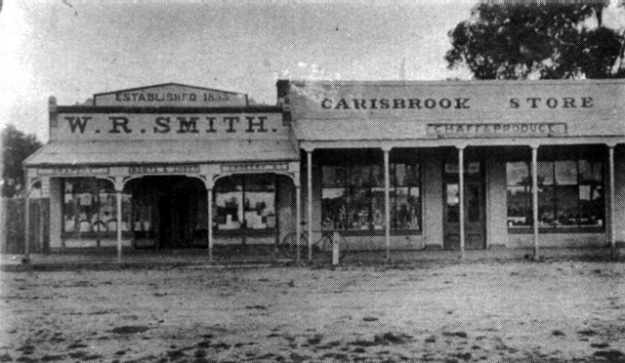
F. Eager, connected to the cousins by marriage, was a founding partner of the W.R.Smith shop.
A theme like Signs leads to infinite varieties of interpretation – serious, historical, humorous. Check out what other Sepians have found through the links on Sepia Saturday.
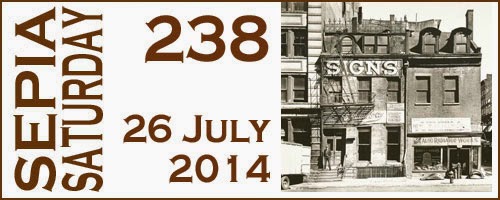
 March 14th 1951
March 14th 1951

